Retro-clocking: what will happen if you crush old iron with liquid nitrogen and helium?
Hi, Giktayms! The road is a spoon for dinner, and records in acceleration - by the time of the conveyor life of computer hardware. But enthusiasts also have “for the soul” discipline - the so-called retro-clocking, when long-discontinued and already rare components “jump higher than their heads” under the influence of nitrogen, helium and strange modifications. What is the old horse capable of, if you give him a new dope, and what is the meaning of such an occupation?

Overclocking is not only romance “I made my home PC faster and deceived the system!”, But also sport, with its own standards and tendencies. A professional overclocker is a breeder and a hero of “racing for survival” at the same time : he, on the one hand, assembles a computer from selected, flawless iron, and makes such components work at the limit of capabilities. For world records you need a fast car and a skilled pilot.
And on the other side are online competitions, where overclocking wizards squeeze the maximum out of those components (about the same) that they get. As a rule, from the new iron of the new model year, on the basis of copies widely available in retail. This is a kind of demonstration, “up to which the equipment has reached” on the part of manufacturers and evidence that overclocking is relevant even for the newest iron, which jumps “above its head” much less often.
')
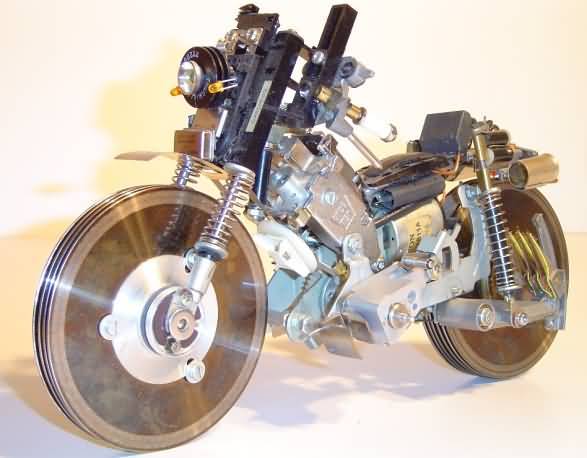
If you need productivity, it will be better to make souvenirs from old iron.
I mean, overclockers willy-nilly change to new combat vehicles every season, and no one is in a hurry to discover the potential of obsolete hardware in great detail. What can we say about the components of the "pre-nitrogen" era? But enthusiasts do not miss the opportunity to have a hand in overclocking old and obviously not fast processors, video cards and drives. Guess why?
Acceleration of old hardware is not monetized in any way - manufacturers invest in the PR of only the new model line, igrodels also do not want to see how their new game “hiccups” on old video cards and processors. Therefore, it is a bit strange to observe such sentimental occupation of professional “overs” for which overclocking is work, and the struggle for ultimate performance is a matter of prestige.
In fact, professional enthusiasts pay attention to antiquities not to drop a dirty tear in memory of the glorious times gone (although for this reason too). Old components in overclocking are valuable due to several factors:
Today, acceleration of iron is almost always associated with liquid nitrogen, and not always in “horse doses” - modern processors are less and less able to work on a “full glass” at ultra-low temperatures and without a cold bag (loss of efficiency upon reaching a non-limiting negative temperature in the case of cooling with nitrogen). On the old "hot" glands the problem is much less common.
Speaking of the classics, it is worth remembering that the truly massive overclocking of processors using liquid nitrogen began in the era of Pentium 4 (Northwood), when enthusiasts took the goal of consistently overcoming the frequency of 5 GHz even with extreme heat emission of components. And liquid helium has never been used by proto-cerroscrewers at all. Does this mean that today enthusiasts can “use a little blood” to rewrite in their own name all the records of past times, simply armed with helium or nitrogen in a home-based bench session?

One of the many exploits of the Celeron 347 years after being taken out of production
Theoretically, yes, no one bothers to invigorate the standings with new records and become famous in the role of the master of overclocking old school iron. But in practice, everything does not look as romantic as in theory. Because for a successful overclocking, an intelligent copy of the processor / video card is needed (after all, we go far beyond the limits of their full potential, which means that the nuances begin), and the choice of classic components now, in 2017, is no longer the same thing. Especially when it comes to overclocking motherboards.
But finding the right RAM for platforms with DDR SDRAM support is not difficult - the HyperX DDR kits on Samsung TCCD or Winbond BH-5 chips are ideal for retro-blockers.

Memory Kingston HyperX KHX3200AK2 - one of the pillars in the dispersal of the old iron
Generally, the beauty of HyperX is that it uses "perishing" memory chips. For example, in the case of DDR3, the Kingston Special Forces memory was based on promising Hynix chips. With it (and this is the past generation of DDR, whatever one may say), platforms based on DDR3 can be rocked up to a record level of DDR3-4600 and higher.
Back in 2011, in an era when DDR3 had not yet become the mainstream type of RAM in home PCs, and the “latest breakthrough” Intel Sandy Bridge processors were just born, HyperX memory set one after another performance records. A pair of HyperX DDR3 modules conquered the frequency of 3,600 MHz (CL10) and 3,275 MHz (CL8) almost 5 years ago (the record of the Lab501 overclocking team in December 2011). However, today such a memory is no longer considered an ultrahardcore - absolutely civil Hyper X Savage DDR3 and DDR4 are enough to set world records, so to speak, in small wholesale, even in tandem with the latest iron. And the potential of obsolete platforms, new modules will open, even if the old iron will be dispersed "above the roof." For example, in order to squeeze all the juices out of the formidable GeForce GTX 770 in the recent past (the Kepler architecture has recently enlarged the ranks of pensioners), the HyperX Savage DDR4 overclocked to moderate 3000 MHz is sufficient to check this fact in battle .
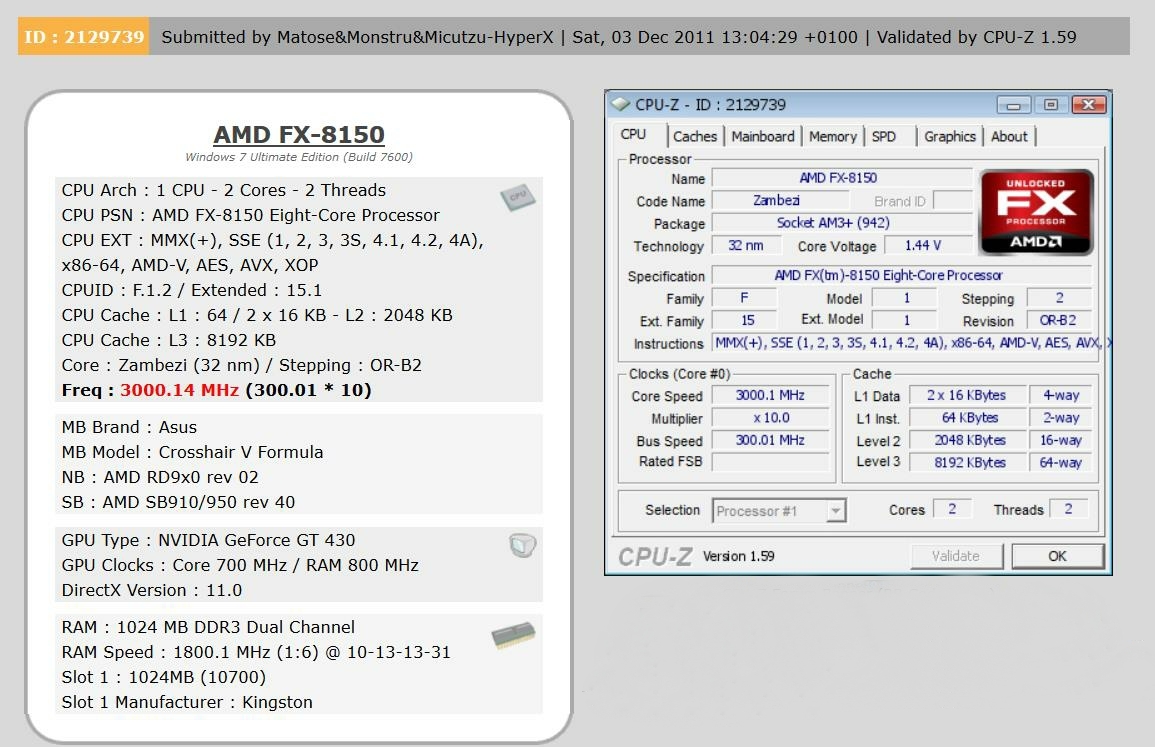
Bleed DDR3 in 2011, ladies and gentlemen
Even for nettops who are lucky enough to get a processor with an unlocked multiplier, there are suitable options - 7 years ago the SO-DIMM DDR3-2133 CL8 modules appeared. Balanced configuration in retro-clocking is when you don’t think whether RAM will master extreme overclocking, whether on the basis of an old or a new platform.
In addition, overclocking with nitrogen has become a tradition since the days of Northwood, so a killer feature could be overclocking with liquid helium, but this is an indecently expensive, time-consuming, ungrateful undertaking that most enthusiasts have no time and money for.
In competitions of old components, the key role is not played by the results in benchmarks (they will be ridiculous even in comparison with “state employees” of 2017), but the maximum possible clock frequency, which is fixed in the table of records. Such a process in overclocking is called validation.
What is most important in retro overclocking is entertainment: the old iron often makes it possible to achieve a performance gain of about 150-200%! Today, even specialized components for overclocking (selected chips in video cards, processors of a special series with an unlocked multiplier) do not give similar results without difficulty, and the old “stones”, even in low-cost versions, conquer record frequencies without problems.
How do you, for example, have a budget Intel Celeron D 347 (65 nm, 2007 model year, Cedar Mill core), which in 2010, after overclocking with liquid helium, jumped at a clock frequency from 3.06 to 8.19 GHz? And in general. Socket 775 and processors based on it (Core 2 Duo and Core 2 Quad of various generations) have become legends for all time.
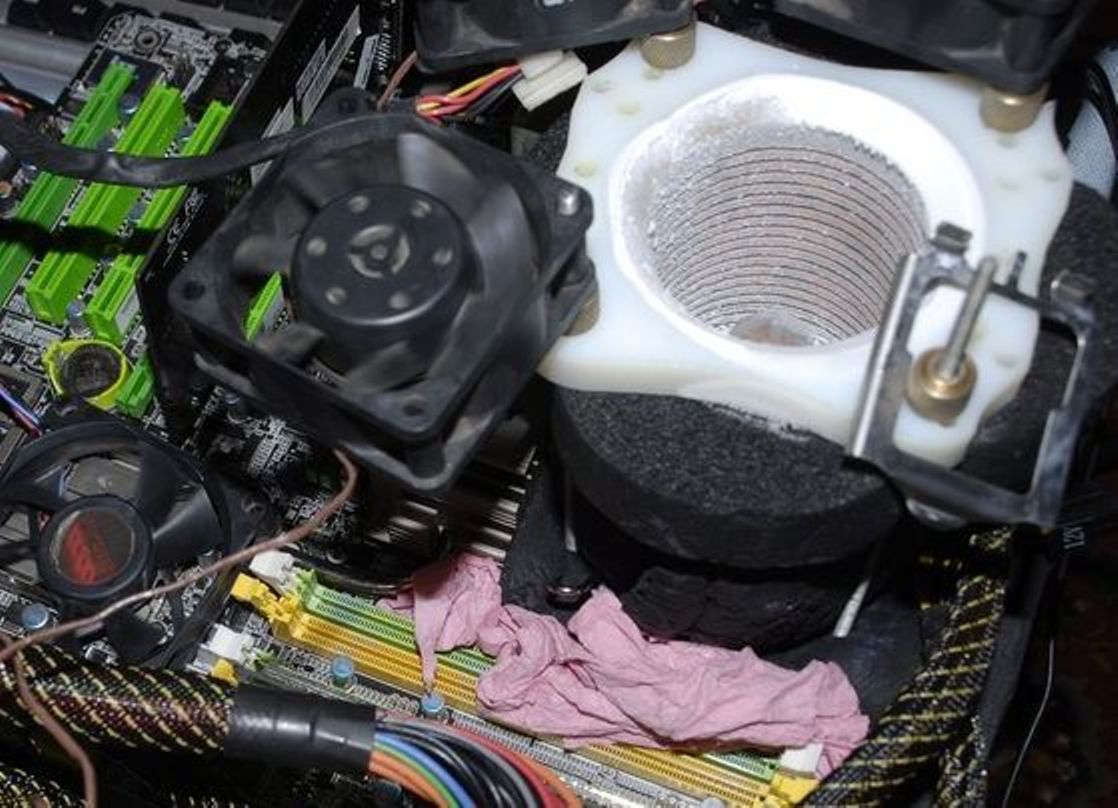
The Intel Celeron D 347 processor in the motherboard DFI LANparty UT P35-T2R produces a record frequency using liquid helium
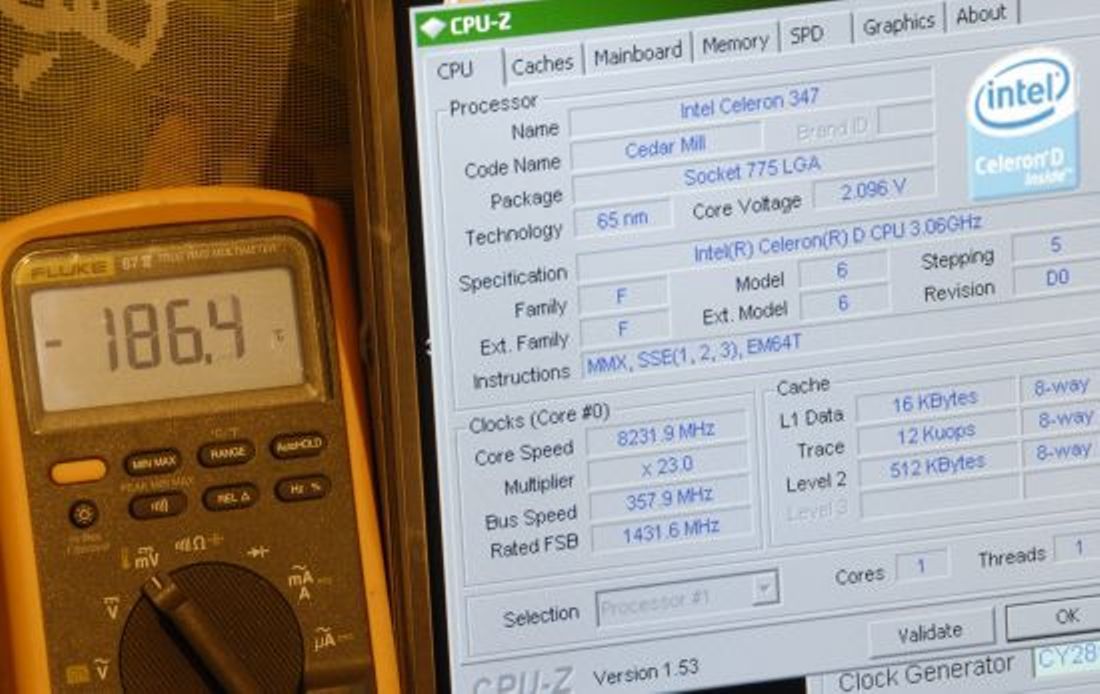
Special respect among overclockers use video accelerators GeForce 8000 series. For example, the sub-flagship GeForce 8600 GTS with 640 MB of memory, Russian enthusiasts (Smoke, slamms and Atheros) dispersed from 500/1600 MHz (core / memory) to 1053/1253 MHz and set records in five overclocking disciplines at once!
Even hot, awkward two-headed video accelerators like NVIDIA GeForce 9800 GX2 (2008) overclocked with liquid nitrogen set performance records six years after the release. The above-mentioned video card in 2014 paired with the new Intel Haswell processor tore from frequencies 600/1000/2000 MHz to 957/2322/2484 MHz? Not that the supersonic result, if we talk about the percentage increase, but no one imagined that the expensive clumsy "furnace" will be able to jump "above the head" after so many years.
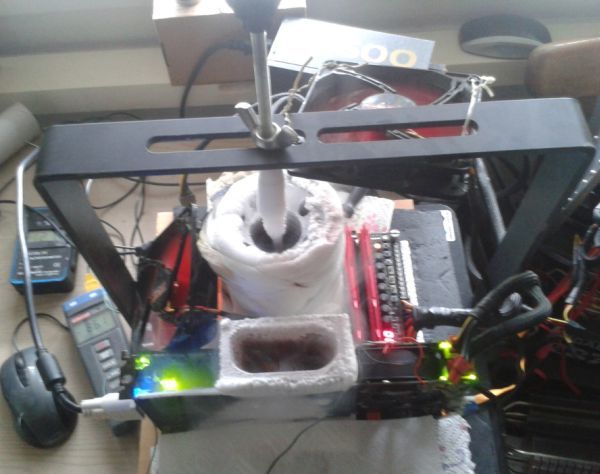
Overclocking by 60% for the core in GeForce 9800 GX2 (paired with Core i5-4670K)
This is not easy to believe, but even when overclocking a system based on SATA revision 1.0, it is advisable to use an SSD rather than a hard disk. Because in benchmarks there is no need to copy files of huge volume in a strict sequence - test utilities often load a large number of compact files, and the main thing in this task is reaction, response time. In such cases, leadership is always left behind solid-state drives. There is no need to rush into maximalism and acquire the ultimate gaming SSD, because the iron does not “shake” it, and budget drives can, though not much, but not “pull” the maximum in random read and write operations. Therefore, in the test stands of retro-blockers, gaming-class SSDs are most often used. In the case of Kingston, we are talking about HyperX Savage.
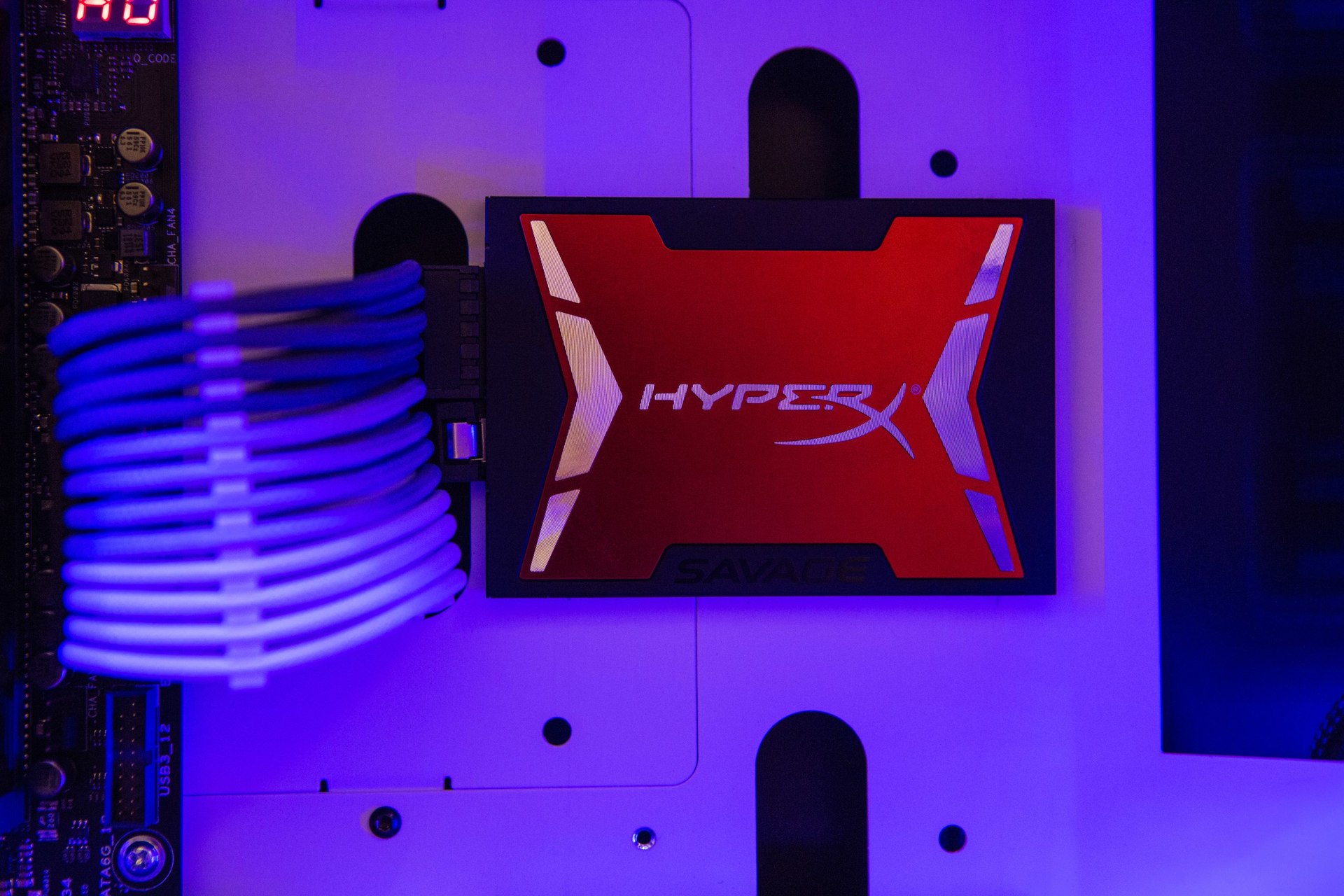
Even in older PCs that are overclocked, it is advisable to use SSD - not for the sake of peak read and write speeds, but for the shortest possible access time to information
And yet, classics before the “Pentimetchevtoy” era today are rarely overclocked and out of sporting considerations — it is just interesting for enthusiasts to experience the era when the processors were not multi-core and very responsive to effective cooling. Hence, bizarre overclocking options, like “freonok” (phase transition systems), instead of the usual and common liquid nitrogen. Under this sauce, Pentium III Coppermine (1999), for example, swings from 733 to 1118 MHz in 2015. And in approximately the same way, the frequency of Intel Celeron based on the same architecture jumps 566 to 1547 MHz! That's what the 180-nm process technology creates - the performance increases many times!
Instead of enumerating the particulars, let’s denote today retroclocking:
Acceleration lived, lives and continues to live, only in more “sterile” and civilized variants. Retro-clocking is a tribute to the components that gave rise to the very idea of overclocking. The idea of a small effort and without significant investment to make the computer much faster. We recommend to study and take part in this hard culture experience for everyone who likes tuning home PC. If only because overclocking processors with the help of nitrogen will become an automatic procedure and will lose almost the entire romantic component.
By the way, about moderately old-school overclocking - from February 2 to February 20, we give a 10% discount in Yulmart on HyperX DDR3 Savage memory kits (the most juice for combat-gaming platforms of past years). For a discount, it is enough to use the promotional code DDR3FEB in the purchase. Good luck and ageless iron!
For more information about Kingston and HyperX products, visit the company's official website and. In choosing your kit HyperX help page with visual aids .

Overclocking is not only romance “I made my home PC faster and deceived the system!”, But also sport, with its own standards and tendencies. A professional overclocker is a breeder and a hero of “racing for survival” at the same time : he, on the one hand, assembles a computer from selected, flawless iron, and makes such components work at the limit of capabilities. For world records you need a fast car and a skilled pilot.
And on the other side are online competitions, where overclocking wizards squeeze the maximum out of those components (about the same) that they get. As a rule, from the new iron of the new model year, on the basis of copies widely available in retail. This is a kind of demonstration, “up to which the equipment has reached” on the part of manufacturers and evidence that overclocking is relevant even for the newest iron, which jumps “above its head” much less often.
')

If you need productivity, it will be better to make souvenirs from old iron.
I mean, overclockers willy-nilly change to new combat vehicles every season, and no one is in a hurry to discover the potential of obsolete hardware in great detail. What can we say about the components of the "pre-nitrogen" era? But enthusiasts do not miss the opportunity to have a hand in overclocking old and obviously not fast processors, video cards and drives. Guess why?
Experience is more valuable than money
Acceleration of old hardware is not monetized in any way - manufacturers invest in the PR of only the new model line, igrodels also do not want to see how their new game “hiccups” on old video cards and processors. Therefore, it is a bit strange to observe such sentimental occupation of professional “overs” for which overclocking is work, and the struggle for ultimate performance is a matter of prestige.
In fact, professional enthusiasts pay attention to antiquities not to drop a dirty tear in memory of the glorious times gone (although for this reason too). Old components in overclocking are valuable due to several factors:
- Iron on the basis of "fat" technical processes is an excellent "simulator" and an object for experiments . It is easier for beginners in overclocking to understand the basics of overclocking on models that have fewer “pitfalls”. Professionals use old hardware to experiment with the power supply system or in a pair with components that require running in before combat use.
- A certain benefit from overclocking "old school" iron still glimmers. Not financial, but rather, resonance - the news that the old processor / video card still has gunpowder in the flasks, the public always finds it warmer than the fact that the next 100 MHz was squeezed out of the new expensive iron. More resonance - more attention from sponsors.
- Pleasant with useful (set of first two points) + absence of crazy competition on the way to records, as in the case of the "pop" iron.
We rewrite history with nitrogen and helium, or after a fight do not wave their fists?
Today, acceleration of iron is almost always associated with liquid nitrogen, and not always in “horse doses” - modern processors are less and less able to work on a “full glass” at ultra-low temperatures and without a cold bag (loss of efficiency upon reaching a non-limiting negative temperature in the case of cooling with nitrogen). On the old "hot" glands the problem is much less common.
Speaking of the classics, it is worth remembering that the truly massive overclocking of processors using liquid nitrogen began in the era of Pentium 4 (Northwood), when enthusiasts took the goal of consistently overcoming the frequency of 5 GHz even with extreme heat emission of components. And liquid helium has never been used by proto-cerroscrewers at all. Does this mean that today enthusiasts can “use a little blood” to rewrite in their own name all the records of past times, simply armed with helium or nitrogen in a home-based bench session?

One of the many exploits of the Celeron 347 years after being taken out of production
Theoretically, yes, no one bothers to invigorate the standings with new records and become famous in the role of the master of overclocking old school iron. But in practice, everything does not look as romantic as in theory. Because for a successful overclocking, an intelligent copy of the processor / video card is needed (after all, we go far beyond the limits of their full potential, which means that the nuances begin), and the choice of classic components now, in 2017, is no longer the same thing. Especially when it comes to overclocking motherboards.
But finding the right RAM for platforms with DDR SDRAM support is not difficult - the HyperX DDR kits on Samsung TCCD or Winbond BH-5 chips are ideal for retro-blockers.
Memory Kingston HyperX KHX3200AK2 - one of the pillars in the dispersal of the old iron
Generally, the beauty of HyperX is that it uses "perishing" memory chips. For example, in the case of DDR3, the Kingston Special Forces memory was based on promising Hynix chips. With it (and this is the past generation of DDR, whatever one may say), platforms based on DDR3 can be rocked up to a record level of DDR3-4600 and higher.
Back in 2011, in an era when DDR3 had not yet become the mainstream type of RAM in home PCs, and the “latest breakthrough” Intel Sandy Bridge processors were just born, HyperX memory set one after another performance records. A pair of HyperX DDR3 modules conquered the frequency of 3,600 MHz (CL10) and 3,275 MHz (CL8) almost 5 years ago (the record of the Lab501 overclocking team in December 2011). However, today such a memory is no longer considered an ultrahardcore - absolutely civil Hyper X Savage DDR3 and DDR4 are enough to set world records, so to speak, in small wholesale, even in tandem with the latest iron. And the potential of obsolete platforms, new modules will open, even if the old iron will be dispersed "above the roof." For example, in order to squeeze all the juices out of the formidable GeForce GTX 770 in the recent past (the Kepler architecture has recently enlarged the ranks of pensioners), the HyperX Savage DDR4 overclocked to moderate 3000 MHz is sufficient to check this fact in battle .

Bleed DDR3 in 2011, ladies and gentlemen
Even for nettops who are lucky enough to get a processor with an unlocked multiplier, there are suitable options - 7 years ago the SO-DIMM DDR3-2133 CL8 modules appeared. Balanced configuration in retro-clocking is when you don’t think whether RAM will master extreme overclocking, whether on the basis of an old or a new platform.
In addition, overclocking with nitrogen has become a tradition since the days of Northwood, so a killer feature could be overclocking with liquid helium, but this is an indecently expensive, time-consuming, ungrateful undertaking that most enthusiasts have no time and money for.
Are new records impressive on old hardware?
In competitions of old components, the key role is not played by the results in benchmarks (they will be ridiculous even in comparison with “state employees” of 2017), but the maximum possible clock frequency, which is fixed in the table of records. Such a process in overclocking is called validation.
What is most important in retro overclocking is entertainment: the old iron often makes it possible to achieve a performance gain of about 150-200%! Today, even specialized components for overclocking (selected chips in video cards, processors of a special series with an unlocked multiplier) do not give similar results without difficulty, and the old “stones”, even in low-cost versions, conquer record frequencies without problems.
How do you, for example, have a budget Intel Celeron D 347 (65 nm, 2007 model year, Cedar Mill core), which in 2010, after overclocking with liquid helium, jumped at a clock frequency from 3.06 to 8.19 GHz? And in general. Socket 775 and processors based on it (Core 2 Duo and Core 2 Quad of various generations) have become legends for all time.

The Intel Celeron D 347 processor in the motherboard DFI LANparty UT P35-T2R produces a record frequency using liquid helium

Special respect among overclockers use video accelerators GeForce 8000 series. For example, the sub-flagship GeForce 8600 GTS with 640 MB of memory, Russian enthusiasts (Smoke, slamms and Atheros) dispersed from 500/1600 MHz (core / memory) to 1053/1253 MHz and set records in five overclocking disciplines at once!
Even hot, awkward two-headed video accelerators like NVIDIA GeForce 9800 GX2 (2008) overclocked with liquid nitrogen set performance records six years after the release. The above-mentioned video card in 2014 paired with the new Intel Haswell processor tore from frequencies 600/1000/2000 MHz to 957/2322/2484 MHz? Not that the supersonic result, if we talk about the percentage increase, but no one imagined that the expensive clumsy "furnace" will be able to jump "above the head" after so many years.

Overclocking by 60% for the core in GeForce 9800 GX2 (paired with Core i5-4670K)
This is not easy to believe, but even when overclocking a system based on SATA revision 1.0, it is advisable to use an SSD rather than a hard disk. Because in benchmarks there is no need to copy files of huge volume in a strict sequence - test utilities often load a large number of compact files, and the main thing in this task is reaction, response time. In such cases, leadership is always left behind solid-state drives. There is no need to rush into maximalism and acquire the ultimate gaming SSD, because the iron does not “shake” it, and budget drives can, though not much, but not “pull” the maximum in random read and write operations. Therefore, in the test stands of retro-blockers, gaming-class SSDs are most often used. In the case of Kingston, we are talking about HyperX Savage.

Even in older PCs that are overclocked, it is advisable to use SSD - not for the sake of peak read and write speeds, but for the shortest possible access time to information
And yet, classics before the “Pentimetchevtoy” era today are rarely overclocked and out of sporting considerations — it is just interesting for enthusiasts to experience the era when the processors were not multi-core and very responsive to effective cooling. Hence, bizarre overclocking options, like “freonok” (phase transition systems), instead of the usual and common liquid nitrogen. Under this sauce, Pentium III Coppermine (1999), for example, swings from 733 to 1118 MHz in 2015. And in approximately the same way, the frequency of Intel Celeron based on the same architecture jumps 566 to 1547 MHz! That's what the 180-nm process technology creates - the performance increases many times!
Not a sport, but a monument to an effective iron with a margin of safety and speed
Instead of enumerating the particulars, let’s denote today retroclocking:
- Acceleration of obsolete hardware is not the pursuit of performance, but the development of skills for beginner overclockers and a field for experimentation among experienced enthusiasts.
- Outdated processors and video cards often don’t bother to work at the limit, because overclocking sport always works with the latest hardware, and overclocking hobbies are limited to overclocking modern home PCs or weak overclocking vintage components.
- Older computer components had a huge “margin of safety” and the potential for working in a freelance mode — today, iron, which will provide a performance boost many times after acceleration, is critically low.
- Extremely hot video cards on NVIDIA 8000-series (G80) and the GeForce 280/280 Ti generation are among the most popular and desired in the market "retro-locking". Among the processors, Intel Pentium III and Core 2 Duo / Core 2 Quad Kentsfield / Wolfdale set the tone. For home use, it was recently decided to overclock Xeon processors on the Nehalem core (server CPUs on an architecture similar to Core i3 / i5 / i7), but in 2017 due to a shortage of motherboards and a lag in performance from the new Intel Core mod gradually faded away.
- Overclocking of obsolete processors by overclockers is not done for the sake of results in benchmarks, but as a way to demonstrate the highest possible clock frequency for a particular architecture.
- Retro-clocking as a hobby can not be called a widespread occupation, but for hardcore and nuances, it makes sense to refer to thematic articles on overclockers.ru.
Acceleration lived, lives and continues to live, only in more “sterile” and civilized variants. Retro-clocking is a tribute to the components that gave rise to the very idea of overclocking. The idea of a small effort and without significant investment to make the computer much faster. We recommend to study and take part in this hard culture experience for everyone who likes tuning home PC. If only because overclocking processors with the help of nitrogen will become an automatic procedure and will lose almost the entire romantic component.
By the way, about moderately old-school overclocking - from February 2 to February 20, we give a 10% discount in Yulmart on HyperX DDR3 Savage memory kits (the most juice for combat-gaming platforms of past years). For a discount, it is enough to use the promotional code DDR3FEB in the purchase. Good luck and ageless iron!
For more information about Kingston and HyperX products, visit the company's official website and. In choosing your kit HyperX help page with visual aids .
Source: https://habr.com/ru/post/401083/
All Articles